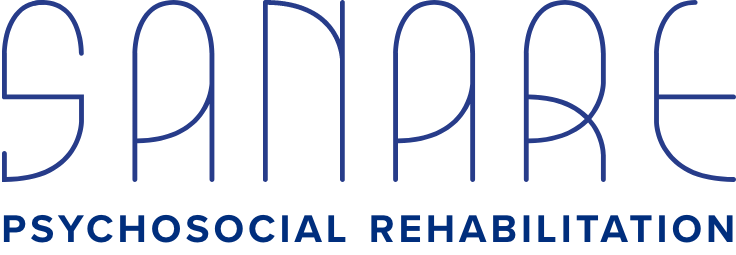
Exposure Therapy
What is Exposure and Response Prevention Prevention (ERP), a specific type of Exposure Therapy?
Exposure and Response Prevention, commonly known as ERP, is a type of cognitive-behavioral therapy used to treat anxiety disorders. In simple terms, ERP involves gradually exposing oneself to feared objects or situations while refraining from engaging in compulsive behaviors or rituals that typically serve to reduce anxiety. The main idea behind ERP is to help individuals confront their fears head-on without resorting to their usual coping mechanisms.
By facing their fears in a controlled environment with the guidance of a therapist, individuals can learn that they do not need to rely on compulsions to manage their anxiety. This process allows them to retrain their brains and form new associations between fear triggers and the lack of negative outcomes.
ERP has been shown through research studies to be highly effective in reducing symptoms of various anxiety disorders, such as OCD, phobias, and PTSD. It empowers individuals by giving them the tools they need to confront their fears and live more fulfilling lives free from the constraints of anxiety-driven behavior patterns.
What is the research behind Exposure Therapy?
Numerous studies have shown that exposure therapy is highly effective for treating anxiety and related disorders. Below are key findings from the research:
Effectiveness for Anxiety Disorders
A meta-analysis of over 100 studies, published in Psychological Bulletin (2006), found that exposure therapy was highly effective for treating anxiety disorders such as PTSD, phobias, and OCD. The analysis concluded that exposure therapy has a large effect size, meaning it significantly reduces anxiety and fear responses.
A study by Craske et al. (2008) demonstrated that exposure therapy is particularly effective in reducing avoidance behaviors and improving overall functioning in individuals with panic disorder and agoraphobia.
In treating social anxiety, exposure therapy has been found to significantly reduce anxiety in social situations, helping patients improve their social skills and confidence (Heimberg et al., 1990).
Neurobiological Evidence
Neuroimaging studies have shown that exposure therapy can change brain activity patterns. For example, research by Milad et al. (2007) demonstrated that exposure therapy reduces amygdala activity, which is responsible for the processing of fear and anxiety, and enhances activity in the prefrontal cortex, which helps regulate emotional responses.
These changes in brain activity suggest that exposure therapy helps "retrain" the brain to respond differently to previously feared situations, reinforcing the extinction process at a neural level.
Effectiveness for OCD and Phobias
For OCD, Exposure and Response Prevention (ERP)—a type of exposure therapy—has been extensively researched. Studies show that ERP is highly effective in reducing compulsive behaviors and obsessive thoughts. A large study by Van Oppen et al. (1995) found that ERP led to substantial improvements in patients with OCD and is considered the gold-standard treatment.
For phobias, exposure therapy has shown to reduce fear responses significantly. A study by Wolitzky-Taylor et al. (2008) found that exposure therapy was effective for treating a wide range of specific fears leading to lasting reductions in fear and avoidance behavior.
Impact on Long-Term Outcomes
Research indicates that exposure therapy not only provides immediate symptom relief but also has lasting effects. For example, a study by Hofmann et al. (2012) demonstrated that exposure therapy for anxiety disorders has enduring positive effects, with many patients maintaining symptom reduction even after treatment has ended.
The study suggests that exposure therapy helps individuals build coping skills and resilience, preventing relapse and ensuring lasting recovery.
Exposure Therapy at Sanare Psychosocial Rehabilitation
Here are some of the many benefits of utilizing Exposure Therapy in the real-world as we do as Sanare Psychosocial Rehabilitation.
Contextual Learning: Real-world Exposure Therapy allows patients to confront their fears in the actual environments where their anxieties typically arise. This contextual learning enhances the therapeutic process by making the exposure exercises more relevant and applicable to their everyday lives. It helps patients generalize the skills they learn improving the likelihood of sustained symptom relief.
Increased Generalization: Anxiety symptoms often manifest differently in various environments outside the therapist's office. By practicing Exposure Therapy in real-world settings, patients learn to apply their coping strategies when anxiety is highest. This broader application helps in generalizing the gains, making it more likely that they can manage their anxiety across various scenarios.
Real-Time Support and Guidance: Therapists can provide real-time support and guidance during real-world exposures, helping patients navigate challenging situations as they occur. This immediate feedback is crucial for reinforcing positive behaviors and assisting patients in effectively managing anxiety without resorting to compulsions or avoiding.
Enhanced Emotional Impact: Emotions and anxiety triggers are often more potent in real-world settings compared to the controlled environment of an office. Experiencing heightened emotional responses during exposures can provide therapists with valuable insights into the patient's triggers and responses, facilitating more targeted interventions and adjustments to the therapy plan.
Behavioral Activation: Engaging in Exposure Therapy activities outside the office encourages patients to become more active and involved in their daily lives. This behavioral activation is an essential component of Exposure, as it helps individuals gradually resume activities they may have been avoiding due to anxiety, thereby improving their overall quality of life.
Realistic Assessment of Progress: Progress in Exposure Therapy can be more accurately assessed when exposures occur in real-world environments. Therapists can observe how well patients manage anxiety triggers, resist compulsions, and apply coping strategies in the contexts where they matter most. This assessment informs adjustments to the treatment plan and reinforces the patient's confidence in their ability to manage anxiety.
